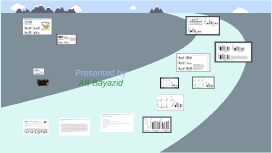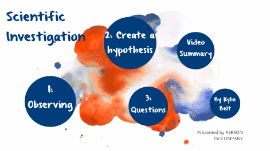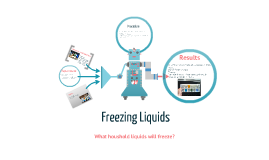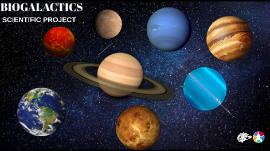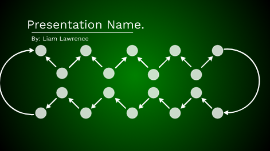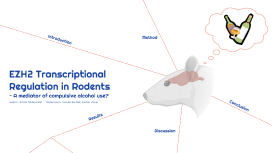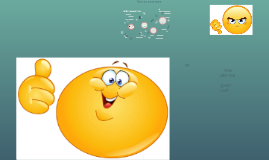Scientific Presentation
Transcript: Identification of "compulsive" rats Foot-shock sensitivity thresholds Resistance score = (mean punished rewards) (mean punished rewards + mean unpunished rewards of the last sessions) >0.43 → Compulsive <0.20 → Non-compulsive Foot-shocks 0.1mA for 3 sessions 0.2mA for 8 sessions 0.25mA for 5 sessions = 16 sessions in total 18 Punishment resistant = "Compulsive" (28%) 26 Punishment sensitive = "Non-compulsive" Compulsive (n = 16) and Non-compulsive (n = 20) rats mA-threshold required for observed retraction of 1, 2 or 4 paws 0.1 - 0.75mA Cue-light Lever Alcohol dispenser Materials Self-administration training Post-surgery evaluation of knockdown qPCR & Expression analysis Stereotactic surgery & Knockdown Drinking well Electric grid Punished sessions with KD-treated (n = 8) and SCR-treated compulsive rats (n = 8) 9 sessions on 0.25mA 14 sessions on 0.3mA Lever-press -> Reward + 5 sec timeout 100microL 20% EtOH per press 19 FR1- and 20 FR2-sessions Sacrifice of all Compulsive rats 50micrometer slices targeting the CeA Punchouts used for PCR TaqMan-probes AAV5-hSyn-miR EZH2-mScarlet vs. scrambled shRNA (control) 2 compulsive rats died / had seizures 1 week recovery 64 male Wistar rats 7-8 weeks old, weighing 270-280g Climate-controlled room, Handled daily Sessions every weekday for 30min Ayman, J., Palotai, M., Dochnal, R., & Bagosi, Z. (2023). Ghrelin amplifies the nicotine-induced release of dopamine in the bed nucleus of stria terminalis(Bnst). Biomedicines, 11(9), 2456. https://doi.org/10.3390/biomedicines11092456 SVT. (2023, August 23). Alkoholexperimenten: 2. Råttor med beroende. [Video]. https://www.svtplay.se/video/jwq3YVA/alkoholexperimenten/2-rattor-med-beroende?info=visa Definitions & Epidemiology Carnicella, S., Yowell, Q. V., & Ron, D. (2011). Regulation of operant oral ethanol self-administration: A dose-response curve study in rats: regulation of operant oral ethanol self-administration. Alcoholism: Clinical and Experimental Research, 35(1), 116–125. https://doi.org/10.1111/j.1530-0277.2010.01328.x Alcohol Use Disorder (AUD) - 11 criteria, e.g: Drinking more often than intended, Continuing to drink despite negative consequences, etc - Treatment prevalence in Europe only 22.3% Compulsive alcohol use - About 20% of all drug-users - Modelled as Punishment resistance World Health Organization [WHO]. (2018). Global status report on alcohol and health 2018. World Health Organization. https://www.who.int/publications/i/item/9789241565639 Method Introduction Cue-light Lever Alcohol dispenser Neuronal Epigenetics Drinking well Electric grid Alcohol both increases and decreases methylation and acetylation, especially in the amygdala GABAergic PKCdelta+ neurons in the Central amygdala (CeA) are important in compulsive drinking The epigenetic enzyme EZH2 is upregulated in PKCd+ cells Janak, P. H., & Tye, K. M. (2015). From circuits to behaviour in the amygdala. Nature, 517(7534), 284–292. https://doi.org/10.1038/nature14188 Domi, E., Barchiesi, R., & Barbier, E. (2023). Epigenetic Dysregulation in Alcohol-Associated Behaviors: Preclinical and Clinical Evidence. Current topics in behavioral neurosciences, Advance online publication. https://doi-org.e.bibl.liu.se/10.1007/7854_2022_410 References EZH2 Transcriptional Regulation in Rodents - A mediator of compulsive alcohol use? Ponomarev, I., Wang, S., Zhang, L., Harris, R. A., & Mayfield, R. D. (2012). Gene coexpression networks in human brain identify epigenetic modifications in alcohol dependence. The Journal of Neuroscience, 32(5), 1884–1897. https://doi.org/10.1523/JNEUROSCI.3136-11.2012 Prom-Wormley, E. C., Ebejer, J., Dick, D. M., & Bowers, M. S. (2017). The genetic epidemiology of substance use disorder: A review. Drug and alcohol dependence, 180, 241–259. https://doi.org/10.1016/j.drugalcdep.2017.06.040 Qiang, M., Li, J. G., Denny, A. D., Yao, J., Lieu, M., Zhang, K., & Carreon, S. (2015). Epigenetic mechanisms are involved in the regulation of ethanol consumption in mice. International Journal of Neuropsychopharmacology, 18(2). https://doi.org/10.1093/ijnp/pyu072 Roberto, M., Gilpin, N. W., & Siggins, G. R. (2012). The central amygdala and alcohol: Role of -aminobutyric acid, glutamate, and neuropeptides. Cold Spring Harbor Perspectives in Medicine, 2(12), a012195–a012195. https://doi.org/10.1101/cshperspect.a012195 Shimizu, T., Kubovcakova, L., Nienhold, R., Zmajkovic, J., Meyer, S. C., Hao-Shen, H., Geier, F., Dirnhofer, S., Guglielmelli, P., Vannucchi, A. M., Feenstra, J. D., Kralovics, R., Orkin, S. H., & Skoda, R. C. (2016). Loss of Ezh2 synergizes with JAK2-V617F in initiating myeloproliferative neoplasms and promoting myelofibrosis. The Journal of Experimental Medicine, 213(8), 1479–1496. https://doi.org/10.1084/jem.20151136 Vanderschuren, L. J., & Everitt, B. J. (2004). Drug seeking becomes compulsive after prolonged cocaine self-administration. Science, 305(5686), 1017–1019. https://doi.org/10.1126/science.1098975 Veazey, K. J., Parnell, S.






